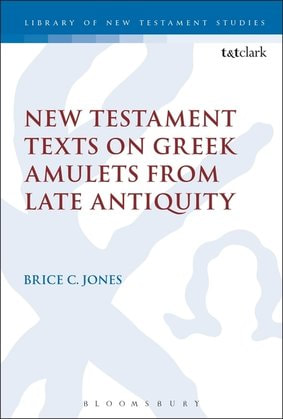 It has just been publicly announced that the 28th International Congress of Papyrology will be held in Barcelona, Spain on 1-6 August 2016. This congress meets only every three years so this will be an exciting time for papyrologists around the world. The first circular has been made available at the official congress website, along with other information. Please note the important dates and deadlines.
0 Comments
An interesting little parchment fragment kept in the Montserrat Abbey in Spain has just been published in Sofía Torallas Tovar and Klaas A. Worp, ed., with the collaboration of Alberto Nodar and María Victoria Spottorno, Greek Papyri from Montserrat (P.Monts. Roca IV) (Barcelona: 2014). I will say more about this excellent volume at a later time, but I wanted to comment on one of the fragments published therein for the first time. P.Monts.Roca 4.59 is a Christian Greek text of unknown nature. The editors tentatively date it to the fifth/sixth century on palaeographical grounds. It is oblong and written in a fairly well-trained hand. Both sides are inscribed; there are traces of another text on the hair side, so presumably it is a palimpsest. The text is certainly Christian, but it is difficult to know precisely what kind of text we are dealing with. Some of the phrases are similar to phrases found in several homiletic texts (e.g., Cyril, Chrysostom, and Didymus), so a homily is at least a good possibility. In any case, perhaps the most interesting feature of the text is that it contains a new saying attributed to Jesus. In other words, it is an agraphon: a saying of Jesus that is not found in the canonical gospels. The saying is in bold in the text reproduced below. The text that comes immediately before the saying seems to have been influenced by Matt. 15:13/Is. 61:3 LXX. The "plantation of God" is probably just a metaphor for "the people of God." But what does it mean for the plantation of God to be "retained to pronounce sweet words?" The editors point to a similar phrase in Diodorus' Comm. Ps. 49.19b, but that is equally obscure. All the same, the saying is a nice little addition to the agrapha and we are indebted to Torallas Tovar and Worp for bringing this little fragment to our attention.
Be sure to watch this fascinating video concerning the conservation of the books and manuscripts of St. Catherine's Monastery as well as the renovation of some of its buildings. The video features Father Justin, the librarian of the monastery, which is one of the oldest monasteries in the world.
Below you will find a call-for-papers for the first North American Papyrology Seminar in Ann Arbor, MI. Please note that the deadline for submissions is February 27, 2015. |
Archives
December 2020
Categories
All
|


